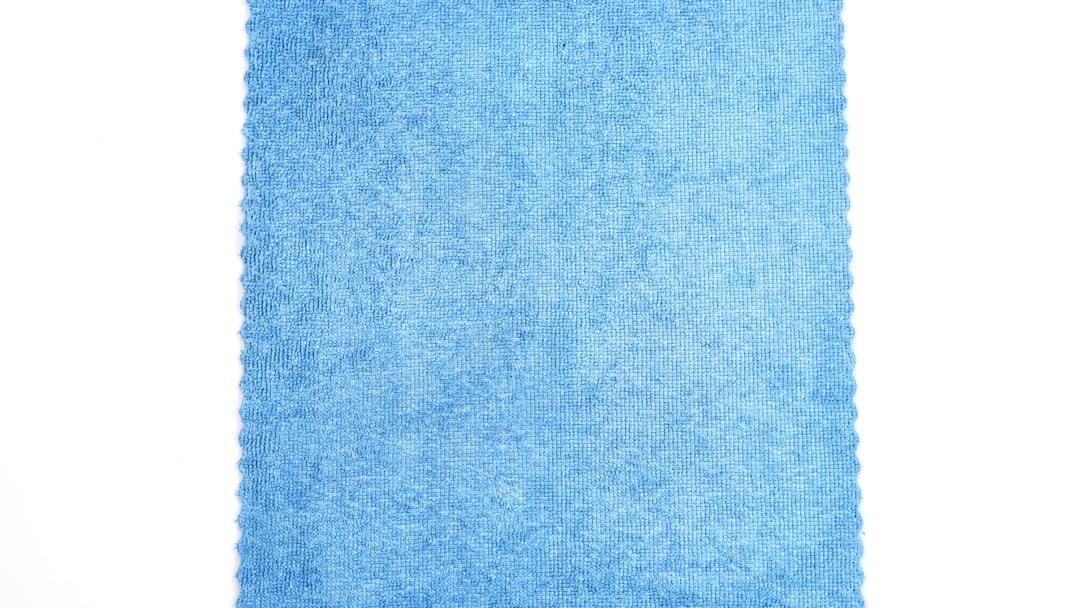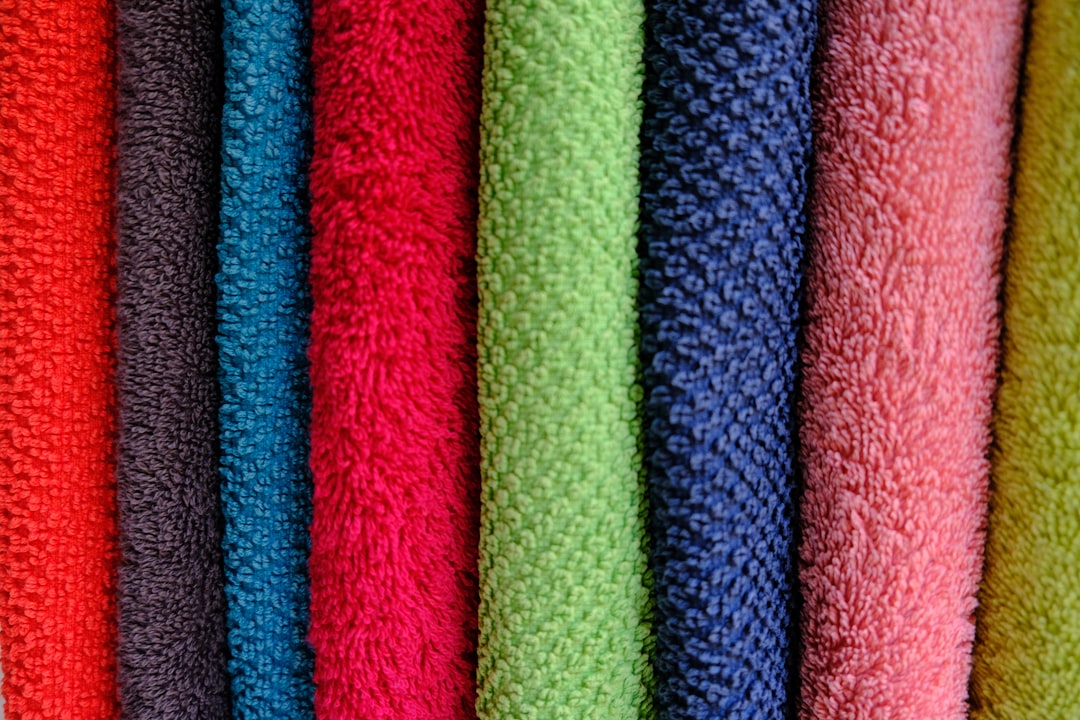

Engage prospects with a scan and streamline customer engagement with FREE QR code marketing tools by Sona – no strings attached!
Create a Free QR CodeFree consultation

No commitment

Engage prospects with a scan and streamline customer engagement with FREE QR code marketing tools by Sona – no strings attached!
Create a Free QR CodeFree consultation

No commitment
QR codes have evolved from a simple novelty to a strategic tool for connecting offline engagement with online action, as covered in QR codes in marketing. For carpet dyeing services companies, QR codes offer a powerful way to drive customer education, streamline in-person interactions, and capture leads from physical touchpoints like appointment cards, flyers, and consultations.
Many businesses in this field struggle to reliably track high-intent prospects when offline encounters are not integrated into digital systems. This leads to missed follow-ups and lost revenue opportunities. QR codes now enable companies to bring analog interactions into their marketing funnel, ensuring every interested customer is accounted for and nurtured toward a booking.
By connecting printed materials and field workflows directly to digital destinations, carpet dyeing providers can answer customer questions, collect feedback, and prompt repeat business. Modern QR workflows make every scan trackable, tie engagements to outcomes, and provide transparent ROI measurement for each campaign. See Sona QR’s product overview. The result is a clearer path from interest to appointment and a measurable loop from scan to revenue.

Carpet dyeing services frequently miss high-value prospects when interest at physical touchpoints is not quickly recorded or acted on. QR codes bridge the gap between in-person interactions and digital outcomes, allowing teams to educate, engage, and convert customers without adding operational burden. When customers can self-serve information with a scan, you remove friction, shorten decision cycles, and focus your staff on high-impact conversations.
To get results, you need a plan: pair each QR placement with a clear purpose, drive scanners to the right destination, and capture the data you need to follow up. The steps below align QR strategy with everyday moments in carpet dyeing, from stain assessments to post-service care. When in doubt, replace any non-measurable, paper-based process with a scannable path to an online experience.
Maximize value by following these steps:
Automating these workflows with a flexible QR platform allows teams to capture more leads, educate customers, and track outcomes from scan to service request. A solution like Sona QR centralizes code creation, routing, and performance reporting, so you can control the entire customer journey from one place and prove the impact of every print asset.
A centralized QR tool enables setup, routing, and analytics for every customer journey touchpoint. By standardizing how you build codes and destinations, your team can launch new campaigns faster and ensure consistent brand quality across materials.

Carpet dyeing decisions often begin offline: a property manager notices traffic lanes in a hallway, a homeowner sees bleach spots under a window, or a hospitality operator compares restoration versus replacement. Without an easy way to go from that moment to a digital action, intent fades. QR codes remove that friction by offering a one-scan path to answers, estimates, and appointments.
They also solve measurement problems. Traditional print and field interactions are notoriously hard to track. For strategy, read Sona’s blog post titled The Essential Guide to Offline Attribution: Maximizing ROI Through Offline Channels. You can see how often your vehicle wrap drives scans, which neighborhoods respond to direct mail, and which office buildings engage with your lobby signage.
Benefits include:
Whether on appointment cards, direct mailers, lobby displays, or field uniforms, QR codes transform analog engagement into actionable digital signals. Over time, this visibility compounds into smarter marketing decisions and faster sales cycles.

Carpet dyeing teams interact with homeowners, property managers, facilities directors, and hospitality operators who value speed and clarity. The most helpful QR formats are the ones that accelerate education and booking while collecting clean contact data. A mix of dynamic and static codes gives you flexibility without overcomplication.
Consider these formats and when to use them:
Dynamic codes support ongoing updates and scan analytics, which makes them ideal for campaigns, seasonal offers, and any asset where you want to test different destinations over time. Static codes are a fit for evergreen information such as a vCard for your general line or a link to a long-lived maintenance guide. A comprehensive platform like Sona QR lets you generate all formats in one place, manage redirects centrally, and view performance by campaign and asset.

Growth stalls when marketing misses or fails to nurture prospects at high-intent moments. In carpet dyeing, those moments happen in hallways with visible wear, in leasing offices reviewing turnover costs, and in living rooms where a homeowner is deciding whether replacement is necessary. Placing QR codes at these decision points increases the odds that interest becomes a qualified lead.
Map your customer journey and add QR codes wherever someone seeks clarity, price, or proof of quality. Think beyond standard brochures to any surface your buyers encounter while evaluating options. Every time you provide a relevant scan-to-action, you save a phone call and capture data that would otherwise be lost.
Use QR codes at these high-traffic interactions:
Optimize placement and messaging using scan analytics. Track which neighborhoods, retail partners, or property types deliver the best response. Then double down on those channels with updated creative and stronger offers.

Carpet dyeing providers often miss engagement signals from prospects who need more education or time before converting. QR codes help surface those signals and channel them into your CRM, so you can follow up based on demonstrated interest instead of guesswork. The use cases below align with common interactions across residential and commercial segments.
Strategically embedding codes at each stage of the journey transforms scattered interactions into a coherent funnel. You capture micro-moments of interest, centralize them in your CRM, and create targeted remarketing and upsell paths that align with what the customer scanned.
Each QR scan is a signal that carries intent, context, and timing. When you deploy unique codes across touchpoints, you create a natural segmentation engine. Instead of relying on assumptions, you can retarget based on real behavior, such as “watched bleach-spot repair video” or “scanned from invoice in March.”
Start by mapping your funnel stages to scan triggers. A flyer scan might indicate awareness, a gallery view suggests consideration, and a coupon scan implies readiness to buy. Your CRM can tag these events and route contacts into relevant nurture sequences. This approach keeps messaging aligned with what the prospect wants now, not what you wish they wanted.
Here is a simple framework:
For carpet dyeing, useful distinctions include homeowners versus property managers, move-out coordinators versus facilities teams, and urgent spill cleanups versus planned color refreshes. Tailoring content to these groups improves engagement and shows you understand their unique constraints and timelines.
QR codes are connectors that make your offline campaigns measurable and your digital campaigns more relevant. In carpet dyeing, your prospects encounter messages in many formats, from vehicle wraps to leasing office folders. Integrating QR codes adds a real-time action to each touchpoint, and it makes your performance visible across channels that were previously opaque.
A strong integration strategy standardizes your creative approach, defines consistent calls to action, and aligns destination pages with the context of the scan. For example, a code on a service vehicle might lead to a neighborhood-specific offer, while a code on an estimate leads directly to a scheduler with open times. This reduces friction and increases the chance of swift conversion.
Use QR codes to enhance:
QR codes serve as the offline onramp to your digital marketing engine. With a centralized platform like Sona QR, you can manage all codes, monitor performance, and sync scan data to your CRM and ad accounts. The result is a connected funnel where every channel reinforces the others.
Executing a QR-driven campaign in carpet dyeing is straightforward when you break it into focused steps. The checklist below pairs practical planning with examples tailored to this industry. Treat it as a repeatable process you can apply to new offers, new territories, and new seasons.
Consistency matters. Use the same standards for code design, CTAs, and landing page structure to make performance comparisons fair and your team’s production efficient.
Clarify the single outcome you want to achieve. Common goals include driving quote requests for bleach-spot repairs, educating prospects about color refresh for sun-faded areas, or capturing reviews after service. The more specific the goal, the easier it is to design an effective scan-to-action flow.
For example, at a regional property management expo, your goal might be to generate restoration quotes from operations managers. Build your campaign around a QR code that opens an event-specific quote form, pre-fills event name, and offers a response-time guarantee.
Choose a code format that matches the action you want. Dynamic codes are best for campaigns and testing because you can edit destinations and track analytics; static codes are fine for evergreen resources that will not change.
If your outcome is lead capture, prioritize dynamic web link or form codes so you can experiment with destinations. For general contacts collected at trade events, a vCard code helps prospects save your estimator’s details quickly, then your follow-up email can share the booking link.
Design for clarity and scannability. Incorporate your logo or brand colors, add a short benefit-driven CTA like “Scan to get your price,” and ensure adequate contrast and white space. Include instructions for less tech-savvy audiences such as “Open your camera and point at the code.”
Test codes across multiple devices, at different distances, and in various lighting conditions. If a code will be on a vehicle or outdoor signage, test from a few meters away. For glossy brochures, test at angles that might reflect overhead lights.
Place your codes where intent is highest. For carpet dyeing, this includes estimate folders, invoices, direct mailers to communities with older carpets, vehicle panels, door hangers, and booths at home shows or IREM/NAHRO conferences. Match each placement to a destination that fits the context.
For example, vehicle codes can point to a local proof page with neighborhood case studies and a quick-schedule widget, while codes on invoices should route to a review capture flow and maintenance guide.
Use analytics to monitor scans by time, location, channel, and device. Look beyond scan volume to downstream actions: form fills, calls, and booked appointments. Tag each code with UTM parameters to attribute traffic and conversions correctly.
Run A/B tests on landing page headlines, CTAs, or offers. If a “Scan to compare dyeing vs. replacement” message lifts conversion over “Scan for a quote,” shift more placements to the winning message. Tools like Sona QR make it easy to view dashboards, compare channels, and push scan data into your CRM for attribution.
Following this process ensures campaign spend is linked to real lead generation, not just impressions. The more you iterate, the more predictable your scan-to-booking conversion becomes.
Marketing teams make better decisions when they can trace results back to specific touchpoints. QR codes make that possible by turning offline interactions into digital events. With the right setup, you can see which flyer version, mailer list, or vehicle wrap produced the most booked jobs and the highest revenue.
Modern scan analytics should capture context such as time of day, device type, and location. Combine that with UTM tagging and CRM integrations, and you get a full view of the customer journey: where they scanned, what they did next, and whether the interaction ended in a sale. Over time, these insights guide budget allocation toward the channels and creatives that produce the best return.
With Sona QR and Sona.com, you can:
The result is a closed-loop system where you can prove that a specific postcard or lobby sign drove a specific job. Many service teams find that making print measurable shifts resources from broad awareness to the placements that consistently generate booked appointments.
QR codes work best when they are specific, visible, and connected to a valuable outcome. As you scale, small process improvements can produce large gains in scan rates and conversion. Focus on removing friction at each step of the journey and on making the benefit of scanning obvious.
Below are practical tips aligned to the most common media and tools in carpet dyeing. Start with the tips that match your current channels and add more as you expand.
Automation simplifies these tactics. With Sona QR integrated to your CRM, each scan can trigger a follow-up workflow, lead scoring, or a review request. You can generate and track your first codes quickly, then scale what works across neighborhoods, property types, and seasons.
QR code technology provides carpet dyeing companies with a solution to persistent challenges like missed prospects, uncertain engagement, and difficulty justifying marketing spend. By turning every offline touchpoint into a measurable opportunity for digital education and lead capture, modern QR solutions empower your team to follow up quickly, nurture hidden opportunities, and attribute revenue with confidence.
When customer education is seamless and every print asset is trackable, you build a connected experience that moves people from curiosity to booking. Start with one or two high-intent placements such as estimate folders and invoices, measure results, and expand to vehicles, direct mail, and partner locations. With the right platform, your offline presence becomes a performance channel you can scale with precision. Start creating QR codes for free.
QR codes have transformed carpet dyeing services from traditional, one-way communication into interactive, customer-empowering experiences. By embedding QR codes, you can educate clients about your dyeing processes, showcase color options, and share care tips—all while capturing valuable insights about customer preferences and engagement. Imagine your customers scanning a code and instantly accessing personalized guidance that builds trust and drives repeat business.
With Sona QR, creating dynamic, trackable QR codes tailored to your carpet dyeing services is effortless. Update your educational content in real time without reprinting, monitor which materials resonate most, and link every scan to measurable outcomes like bookings or inquiries. No missed opportunities—just smarter, data-driven customer connections.
Start for free with Sona QR today and transform how you educate, engage, and grow your carpet dyeing clientele with every scan.
QR codes in carpet dyeing services bridge offline and online interactions, enabling customer education, lead capture, easier booking, measurable marketing ROI, and faster sales cycles.
Choose a carpet dyeing service that uses tools like QR codes to educate customers, provide transparent pricing, capture leads effectively, and offer measurable results tied to customer interactions.
The process often involves assessing stains or faded areas, educating customers through interactive content, booking consultations via QR-enabled forms, performing the dyeing or restoration, and providing post-service care instructions.
Carpet dyeing costs vary and can be explored through dynamic QR codes linking to pricing calculators or personalized quotes, allowing customers to quickly get accurate estimates.
Methods include spot repair, full-room re-dye, and color refresh, with the best option depending on factors like damage extent and carpet type; QR codes can direct you to galleries and guides that help determine the right method.
QR codes provide instant access to service info, booking pages, feedback forms, and maintenance tips, reducing friction and enabling customers to self-serve while helping providers capture and nurture leads.
Place QR codes on appointment cards, invoices, flyers, service vehicles, uniforms, direct mail, partner retail displays, and on-site materials to capture customer interest at high-intent moments.
Useful QR code formats include dynamic web links to booking or info pages, vCards for contact sharing, pre-filled SMS or email messages, forms and surveys, and educational videos.
They use analytics platforms to monitor scan rates, user engagement, conversion metrics, and tie scan data to CRM systems for attribution and revenue measurement.
Define a clear goal, select the appropriate QR code type, design and test codes for clarity, deploy them across high-impact channels, then track and optimize performance using analytics.
QR codes create segmented audiences based on user behavior and scan context, enabling personalized follow-ups and targeted marketing aligned with the customer’s journey stage.
Yes, dynamic QR codes allow updating destination URLs and messaging without reprinting, enabling ongoing campaign optimization and content flexibility.
Common use cases include customer education hubs, feedback and review collection, maintenance instructions, instant quotes at events, and cross-sell or upsell promotions.
QR codes unify offline and online campaigns by making print materials measurable, enhancing customer engagement, and providing consistent, trackable calls to action across various channels.
Use unique codes per asset, tag destinations with UTM parameters, train staff to highlight codes, and deploy context-aware placements such as dye sample swatches or inspection checklists.
Use Sona QR's trackable codes to improve customer acquisition and engagement today.
Create Your FREE Trackable QR Code in SecondsJoin results-focused teams combining Sona Platform automation with advanced Google Ads strategies to scale lead generation

Connect your existing CRM

Free Account Enrichment

No setup fees
No commitment required

Free consultation

Get a custom Google Ads roadmap for your business






Launch campaigns that generate qualified leads in 30 days or less.
